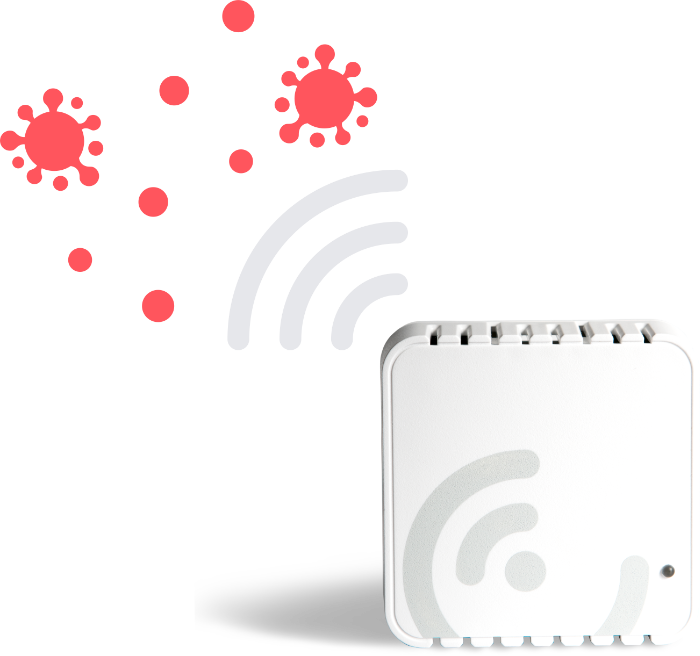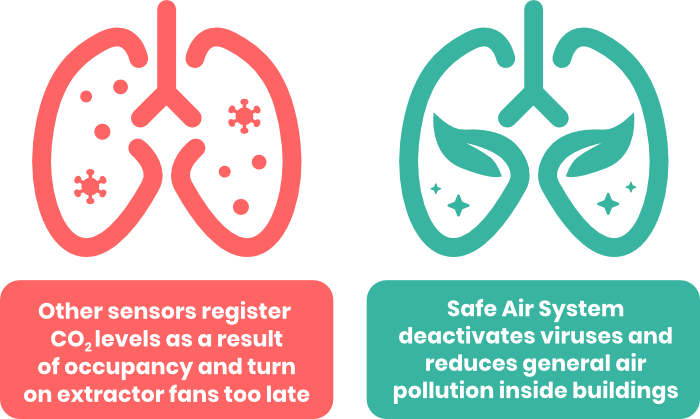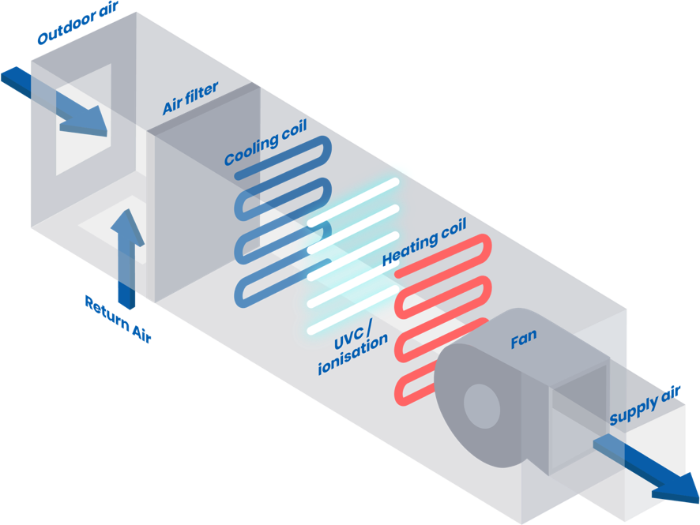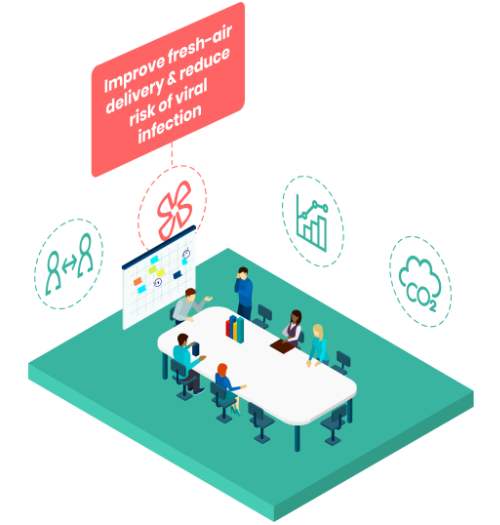Challenge
Improve indoor air quality and reduce viral risk in all buildings
Step 1 – Monitor and Empower
By installing a continuous sensing solution, it is possible to see the live ‘health’ of the building. The data can be made accessible to staff as well as office managers.
Transparency gives staff the confidence to safely return to a good working environment. Sensors visible in the rooms empower staff to take action, such as opening windows.
We designed the Safe Air System, which uses UVC / Ionization technology and advanced air-flow management, to ensure your air is of the best quality.
Poor indoor air quality contributes to Sick Building Syndrome (SBS): headaches, fatigue, dry eyes, usually in an office (NHS, 2017)


Step 2 – Clean Air
For naturally ventilated spaces, specialised in-room filters, ionisation or sanitisation units may be used to deactivate viruses, to reduce the risk of the viral infection transmission associated with elevated CO2 levels, as well as remove air pollution.
For buildings with mechanical ventilation the Safe Air System uses UVC and/or ionization technology and advanced air-flow management, to ensure your air is of the best quality. This can be retrofitted into your existing AHU to deactivate viruses and improve fresh air delivery.
Please get in touch to find out how Safe Air System can help you.
Results
Map out potential risks, prioritise measures, and follow data-led risk management methods to reduce staff downtime.
Reduce risk of infection transmission by filtering out bacteria, viruses & other pollutants, in spaces with and without mechanical ventilation.
Ionisation and UVC technology deployed in the central plant AHUs deactivate viruses and introduce ions into the actual rooms, which helps to reduce viral infection transmission risk during occupancy.
An energy saving benefit of including ionisation and/or UVC in the AHU is that it allows for safe use of recirculation dampers and thermal wheels, during winter months, to capture heat coming out of the building. This reduces energy consumption, without increasing risk of viral infection transmission in the building.
Air-conditioning split units generally do not bring in fresh air; they are only for heating and cooling
Deactivates pathogens
Targets particles
Tackles odours
Reduces energy
The SuperAHUTM
Working with our partners we can modernise your ventilation system. The SuperAHUTM uses a number of novel techniques:
- UVC and/or ionisation to deactivate viruses and clean the air,
- EC plug fans to reduce energy use,
- Dynamic balancing (real-time occupancy levels guiding fan speed and ductwork branch damper control) to increase effective air delivery capacity and further reduce energy consumption.
The SuperAHUTM enables buildings to reduce carbon emissions, with a significant contribution towards net zero carbon goals.
Improve fresh-air delivery by maximising the effective capacity of your AHUs to feed more fresh air to areas that are more occupied.
Up to 85% annual energy savings can be made on your HVAC systems with the SuperAHUTM.

